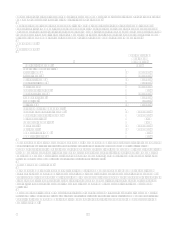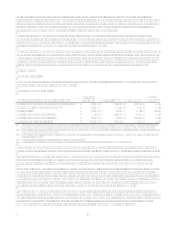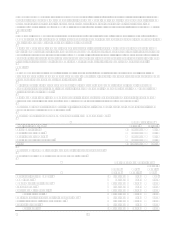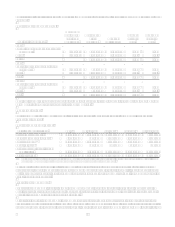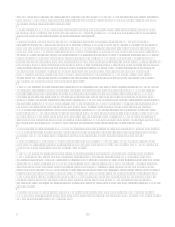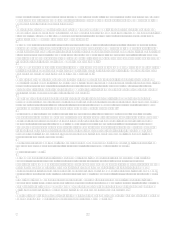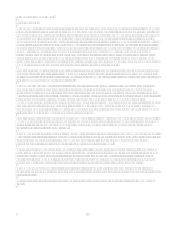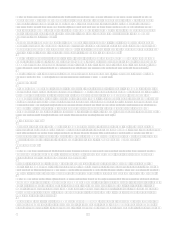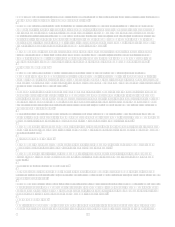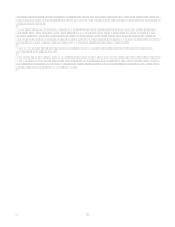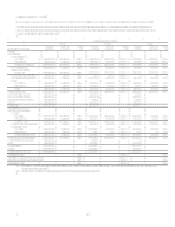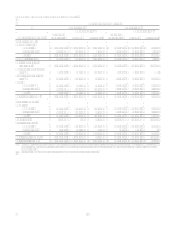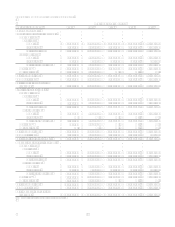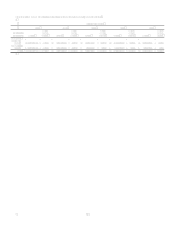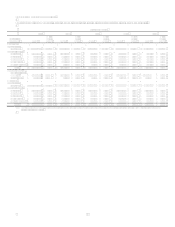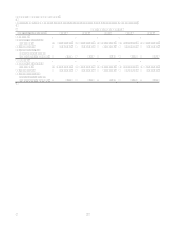Capital One 2006 Annual Report Download - page 71
Download and view the complete annual report
Please find page 71 of the 2006 Capital One annual report below. You can navigate through the pages in the report by either clicking on the pages listed below, or by using the keyword search tool below to find specific information within the annual report. 53
The Bank and Savings Bank treat a portion of their loans as subprime under the Expanded Guidance for Subprime
Lending Programs (the Subprime Guidelines) issued by the four federal banking agencies that comprise the Federal
Financial Institutions Examination Council (FFIEC), and have assessed their capital and allowance for loan losses
accordingly. Under the Subprime Guidelines, the Bank and Savings Bank each exceed the minimum capital adequacy
guidelines as of December 31, 2006. Failure to meet minimum capital requirements can result in mandatory and possible
additional discretionary actions by the regulators that, if undertaken, could have a material effect on the Companys
consolidated financial statements.
For purposes of the Subprime Guidelines, the Company has treated as subprime all loans in the Banks and the Savings
Banks targeted subprime programs to customers either with a FICO score of 660 or below or with no FICO score. The
Bank and the Savings Bank hold on average 200% of the total risk-based capital charge that would otherwise apply to such
assets. This results in higher levels of regulatory capital at the Bank and the Savings Bank.
Additionally, regulatory restrictions exist that limit the ability of the Bank, Savings Bank, CONA, North Fork Bank and
Superior to transfer funds to the Corporation. As of December 31, 2006, retained earnings of the Bank, the Savings Bank,
CONA, North Fork Bank and Superior of $142.2 million, $362.0 million, $101.2 million, $37.5 million and $0.4 million,
respectively, were available for payment of dividends to the Corporation without prior approval by the regulators.
Additional information regarding capital adequacy can be found on pages 100-102 in Item 8 Financial Statements and
Supplementary DataNotes to the Consolidated Financial StatementsNote 19.
Dividend Policy
Although the Company expects to reinvest a substantial portion of its earnings in its business, the Company also intends to
continue to pay regular quarterly cash dividends on its common stock. The declaration and payment of dividends, as well as
the amount thereof, are subject to the discretion of the Board of Directors of the Company and will depend upon the
Companys results of operations, financial condition, cash requirements, future prospects and other factors deemed relevant
by the Board of Directors. Accordingly, there can be no assurance that the Corporation will declare and pay any dividends.
As a holding company, the ability of the Corporation to pay dividends is dependent upon the receipt of dividends or other
payments from its subsidiaries. Applicable banking regulations and provisions that may be contained in borrowing
agreements of the Corporation or its subsidiaries may restrict the ability of the Corporations subsidiaries to pay dividends to
the Corporation or the ability of the Corporation to pay dividends to its stockholders.
XI. Business Outlook
This business outlook section summarizes the Companys expectations for earnings for 2007, and its primary goals and
strategies for continued growth. The statements contained in this section are based on managements current expectations and
do not take into account any acquisitions that might occur during the year. Certain statements are forward looking, and
therefore actual results could differ materially from those in the Companys forward looking statements. Factors that could
materially influence results are set forth throughout this section and in Item 1A BusinessRisk Factors.
Expected Earnings
The Company expects to deliver diluted earnings per share between $7.40 and $7.80 in 2007. This guidance includes the
expected impact of about $140 million in intangibles amortization and about $100 million of integration expenses both
related to the acquisitions of both Hibernia and North Fork.
Inclusive in this guidance is the assumption that unsecured credit in the U.S. returns to more normal levels in 2007. In
addition, the Company expects that the yield curve will remain inverted early in the year and stay relatively flat through the
balance of 2007. Finally, the Company assumes that the cyclical downturn in the residential mortgage market continues into
2007, and is likely to be further impacted by the recently issued federal regulatory guidance on non-traditional mortgages.
The Companys 2007 results will also be impacted by the targeted $275 million pre-tax in net synergies, consistent with the
announcement of the deal in March 2006. The Company now expects the full run-rate synergies will be realized later in 2008,
and there is a reduced level of opportunity to achieve cost and revenue synergies in 2007. This is partially a result of the
impact of the expected yield curve environment on near-term balance sheet synergies. It also results from the scheduling of
the conversion to a single deposit platform and brand in the first quarter of 2008. This timing is driven by the interest of a
smooth and effective integration.
The share count used to translate the Companys expected GAAP NIAT to earnings per share assumes the beginning of the
previously announced $3 billion in share buy-backs in the second quarter of 2007. The Company previously announced its
intention to execute $3 billion in share buy-backs, split evenly between the second half of 2007 and the first half of 2008. The




